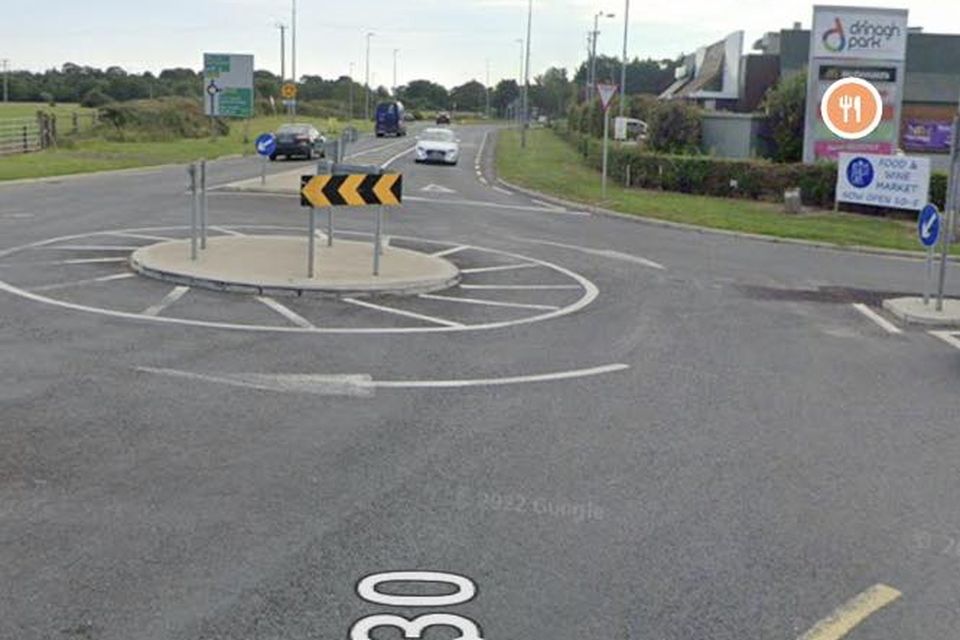When Canada’s population hit 40 million last week, it was a reminder that representation in the House of Commons will have to keep pace with the growing country. But although the number of MPs from Alberta and Ontario could grow over the next 20 years, those provinces risk becoming even more underrepresented as special clauses protect other provinces, such as Quebec.
Last month, the Journal de Montréal published a series of articles claiming Quebec will eventually become “trapped” by Ottawa and lose political power as immigration rates increase in the rest of the country.
“Quebec will find itself drowned in a sea of 100 million Canadians by the end of the century, if the massive immigration targets announced by the Trudeau government last fall materialize,” it said, referring to Ottawa’s plan to welcome as many as 500,000 immigrants a year in 2025. Premier François Legault said this was a threat to Quebec and the French language.
Even though the 100-million figure came from the Century Initiative advocacy group, not the federal government, Canada is well on its way to this kind of growth and could exceed 50 million people within the next 20 years.
Demographic growth, already overwhelmingly dependent on immigration, will be even more so as the population ages and birth rates remain low across all provinces, explained Marc Termote, an associate professor of demography at the University of Montreal.
Because Quebec’s share of immigration is and will likely remain much lower than its share of the Canadian population – the province is considering increasing its immigration target to 60,000 a year, about half of what it needs to keep up with the rest of the country – “Quebec will continue to lose demographic weight, and therefore political weight,” Prof. Termote said.
The Constitution requires that the number of seats in the House of Commons be recalculated every 10 years to reflect changes in Canada’s population according to the representation formula, which takes into account demographic growth and special clauses.
Under current law, provinces don’t lose seats – even when their share of the population falls. At the same time, the number of MPs is restricted by the formula, so fast-growing provinces gain relatively few seats.
“Quebec is ever so slightly overrepresented at the moment, but that’s going to become a flashpoint over the coming years if Quebec doesn’t grow faster than it has been,” said Richard Johnston, professor emeritus at the University of British Columbia’s department of political science.
In late 1997, as Canada was about to reach 30 million people, Ontario had 11.3 million residents while Quebec had 7.3 million, British Columbia had almost four million, Alberta had 2.8 million and Nova Scotia stood at fewer than a million.
During that year’s federal elections, Canadians voted in 301 electoral districts, carrying Prime Minister Jean Chrétien’s Liberal Party to a second majority government. At the time, Ontario had 103 seats, Quebec 75, B.C. 34, Alberta 26 and Nova Scotia 11.
That meant Ontario, even though it had the highest number of seats of any province as the country’s most populous, was underrepresented in Parliament. The same was true of B.C. and Alberta, while Quebec was slightly overrepresented and Nova Scotia more so.
Seats added in 2013 to Ontario, B.C. and Alberta as a result of the last decennial revision did not match their fast population growth, as Atlantic provinces, along with Manitoba and Saskatchewan, remain overrepresented in today’s 338-seat Parliament.
This dynamic will continue when Parliament grows to 343 seats, following the 2021 census, which should come into force in September.
Quebec, initially set to lose one riding with the revision, will keep 78 seats. Mr. Legault pushed back against the planned reduction at the time, saying that “the nation of Quebec deserves a certain level of representation in the House of Commons, regardless of the evolution of the number of inhabitants in each province.”
The federal government obliged and passed a bill amending the Constitution Act last year. It provided that no province can have fewer MPs than it had in 2019, which could lead to severe distortions in the decades to come.
According to Statistics Canada, the country’s population could hit the 50-million mark by 2043 if current immigration levels stay in place. In projections released last year, a high-growth scenario put it at 52.5 million people 20 years from now.
Under that scenario, Ontario (projected to reach 21.1 million), Alberta (7.2 million) and B.C. (7.4 million) would continue to outpace other provinces, while Quebec (10.2 million) would be left behind, like Atlantic Canada.
The number of MPs for the fastest-growing provinces would go up, but that would be unlikely to cause a fundamental shift in Ottawa under the current rules, UBC’s Prof. Johnston said, because of the embedded protections in the representation formula. “In fact, the underrepresentation of Ontario, Alberta and B.C. is probably going to get worse,” he said, even as their numbers of MPs grow. “The critical question is whether the rules are politically sustainable.”
Using today’s rules to compute what this would mean for the 2040s’ Parliament, Quebec, Manitoba, Saskatchewan and the Atlantic provinces would keep their current numbers of MPs even as their demographic weight continues to decrease and more ridings are added to other provinces, for a total of 362.
It would mean that Alberta, set to reach 13.6 per cent of the population in 2043 under a high-growth scenario, would claim 44 seats (or 12.2 per cent of the ridings), while Quebec – whose population growth alone would warrant a diminished number of seats if not for the fact that it is protected, like other overrepresented provinces, by special clauses – will keep 78 seats (21.5 per cent) for 19.4 per cent of the country’s population. Ontario would claim 131 seats (36.2 per cent) for 40.3 per cent of the population.
The representation formula, however, is not immutable, and changes could induce faster growth in ridings during the next two revisions, as happened after the 2011 census under Stephen Harper’s Conservative government in an attempt to “compensate for what was a systematic drag on the representation of the fastest-growing provinces,” Prof. Johnston said.
But demographic changes not only influence the number of seats in Parliament but many other resources as well. “Federal transfers – related to equalization, health care, postsecondary education, social assistance, child care – depend directly on the number of each province’s inhabitants,” Prof. Termote said. “As Quebec’s share in the total Canadian population will continue to decline, Quebec’s share in the total federal transfers will necessarily also decline.”
Adblock test (Why?)
As the Canadian population passes 40 million, fast-growing provinces gain relatively fewer seats in Ottawa - The Globe and Mail
Read More







/cloudfront-us-east-2.images.arcpublishing.com/reuters/CQZCOOTSIVJS5EJP7EQ4VM25MY.jpg)


/cloudfront-us-east-1.images.arcpublishing.com/tgam/SCQ3WZQBRJKLPMTJR2JJ3PR7XM.JPG)

In 2005 we were hammered in the first Test. When you go 1-0 it is essential you win the first day of the second Test.
We scored 407 on day one at Edgbaston and were cockahoop because we knew we were back in the race.
So whatever happens on Wednesday, whether England bat or bowl, they have to win that day. If not, and Australia bowl England out or put up a good score, it is a long, uphill road back into the series.
I don’t think losing at Edgbaston will have hurt England. Like Brendon McCullum said, it backed up the way they have been playing. But there can be no room for mistakes now, especially on day one at Lord’s. If England go 2-0 down they are not winning the Ashes. Teams do not come back from that.
It was great entertainment at Edgbaston but let’s face it, one team will arrive at Lord’s happier and that is the side that is 1-0 up.
I don’t know if MCC can change the pitch now but what England need is lateral movement, especially as they might not have a frontline spinner with Moeen Ali injured.
They need to be sharper in their bowling, too. The stand out seamer for England in Birmingham was Stuart Broad because he has been playing cricket. The others needed a spell or two to find their sharpness.
But more than anything it is lateral movement they need. As soon as that ball did anything at Edgbaston, you felt England would take wickets. It only did a little bit for a short period of time but when Broad started swinging it, he got outside edges off Steve Smith and Marnus Labuschagne.
David Warner was caught behind by one that nibbled away too and Usman Khawaja should have been out on five, nicking a ball that moved. If they don’t find lateral movement I don’t see how they are going to take 20 wickets for fewer than 600 runs.
If it is flat and slow, Australia will score at least 350 in one innings, 250 in the other which means England have to find 600 runs themselves. When you play expansively and aggressively you bring the opposition into play. It is great to watch but 600 runs is a lot. England should be thinking about how they can reduce Australia down to 450-500 which means bowling them out for 300 and 175. That is about right. If it is a 500 run kind of Test, England only have to bat 120 overs given their aggression. That is the way I would be playing the Ashes series.
The slope helps at Lord’s but it has also helped a few overseas teams over the last few years as well. The Test against Australia in 2019 was a draw but had a bit of pace. That is the kind of wicket you want to play Australians on. Fighting fire with fire, and with snicks that carry.
If the pitch is going to be flat then James Anderson has talked himself out of the Test. He has basically said in his own words that if the pitches are going to stay benign he is out of it, which is amazing for our greatest ever who has bowled brilliantly on flat wickets.